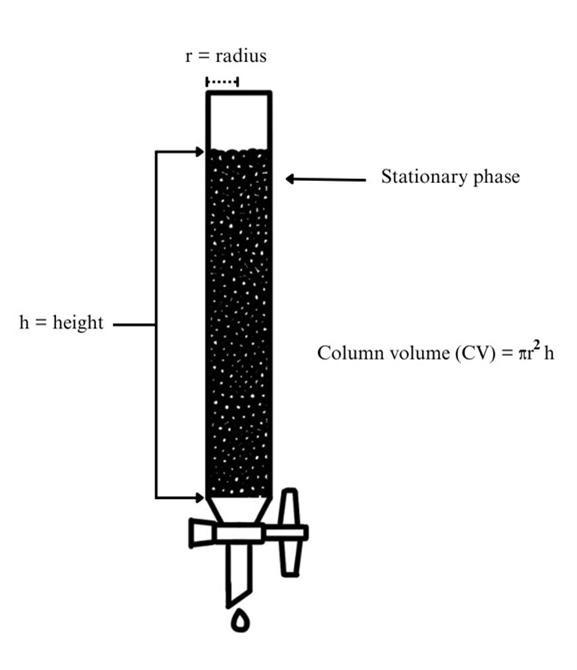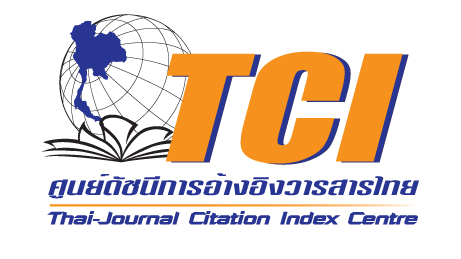Inhibition of Nε - (carboxymethyl) lysine (CML) and Nω - (carboxymethyl) arginine (CMA) Formation by Using Microalgae Crude Extracts
DOI:
https://doi.org/10.53848/ssstj.v12i1.1025Keywords:
Advanced glycation end-product, AGEs, CMA, CML, ELISA, Microalgae extractAbstract
Advanced glycation end-products (AGEs) are generated through glycation reactions, which take place between proteins, nucleic acids, or lipids and a reducing sugar. AGEs cause degeneration of cells, which contributes to aging-related diseases, metabolic syndromes, and hyperlipidemia, among others. Several studies found plant bioactive compounds such as phenolics (phlorofucofuroeckol-A and dieckol) and flavonoids (rutin and quercetin) could inhibit AGEs, but an alternative resource produced of those compounds and a new compound is still needed. This study was aimed to investigate the inhibitory effect of AGEs, especially Nε - (carboxymethyl) lysine (CML) and Nω - (carboxymethyl) arginine (CMA), formation by using three microalgae extracts produced from Micractinium sp. KLSc62 (G4), Chlorella sp. KLSc59 (KS), and Chlorella sp. KLSc61 (SR). Algal cells were extracted with 30% and 60% ethanol, and AGEs formation was determined by ELISA assay. The best result showed that 60% of ethanolic crude extract from Micractinium could inhibit CML formation up to 5%. This Micractinium extract was subjected to be fractionated through column chromatography (C18 resin) as six fractions, followed by ELISA detection of AGEs formation. We found that the 25% ethanolic fraction and 99.9% ethanolic fraction showed significantly most effectiveness in inhibiting CMA and CML formation, which were 23% and 11%, respectively. This preliminary finding suggested that 25% and 99.9% of Micractinium ethanolic fractions were likely to contain bioactive compounds capable of inhibiting CML and CMA formation. We propose to characterize these bioactive compounds using HPLC, preparative HPLC, and LC-MS/MS in further studies.
References
Adar, O., Kaplan-Levy, R. N., & Banet, G. (2016). High temperature Chlorellaceae (Chlorophyta) strains from the Syrian-African Rift Valley: The effect of salinity and temperature on growth, morphology and sporulation mode. European Journal of Phycology, 51(4), 387–400.
https://doi.org/10.1080/09670262.2016.1193772
Chae, H. J., Seo, J. B., Kim, S. H., Youn, E. J., Kim, S., & Suh, S. S. (2021). Antarctic freshwater microalga, Micractinium simplicissimum, suppresses inflammation. Journal of Nanoscience and Nanotechnology, 21(7), 4098–4103(6). https://doi.org/10.1166/jnn.2021.19158
Chen, C.-Y., Zhang, J.-Q., Li, L., Guo, M.-M., He, Y.-F., Dong, Y.-M., Meng, H., & Yi, F. (2022). Advanced glycation end products in the skin: Molecular mechanisms, methods of measurement, and inhibitory pathways. Frontiers in Medicine, 9, 837222. https://doi.org/10.3389/fmed.2022.837222
Chen, W., Wang, J., Ren, Y., Chen, H., He, C., & Wang, Q. (2021). Optimized production and enrichment of α-linolenic acid by Scenedesmus sp. HSJ296. Algal Research, 60, 102505. https://doi.org/10.1016/j.algal.2021.102505
Chen, Y., Tang, S., Chen, Y., Zhang, R., Zhou, M., Wang, C., Feng, N., & Wu, Q. (2019). Structure-activity rela-tionship of procyanidins on advanced glycation end products formation and corresponding mechanisms. Food Chemistry, 272, 679–687. https://doi.org/10.1016/j.foodchem.2018.08.090
Fotheringham, A. K., Gallo, L. A., Borg, D. J., & Forbes, J. M. (2022). Advanced glycation end products (AGEs) and chronic kidney disease: Does the modern diet AGE the kidney?. Nutrients, 14(13), 2675.https://doi.org/10.3390/nu14132675
Godbey, W. T. (2022). Cell growth. Biotechnology and its applications (2nd ed., pp. 117–150). Academic Press.
https://doi.org/10.1016/B978-0-12-817726-6.00005-8
Gorman, D. S., & Levine, R. P. (1965). Cytochrome f and plastocyanin: Their sequence in the photosynthetic electron transport chain of Chlamydomonas reinhardi. Proceedings of the National Academy of Sciences of the United States of America, 54(6), 1665–1669. https://doi.org/10.1073/pnas.54.6.1665
Imai, Y., Nakashima, Y., & Kanno, T. (2022). Inhibitory effects of Parachlorella beijerinckii extracts on the formation of advanced glycation end products and glycative stress-induced inflammation in an in vitro skin dermis-like model. Evidence-Based Complementary and Alternative Medicine, 2022. https://doi.org/10.1155/2022/8789903
Islam, Z., Khatoon, H., Minhaz, T. M., Rahman, M. R., Hasan, S., Mahmud, Y., Hossain, M. S., & Sarker, J. (2021). Data on growth, productivity, pigments and proximate composition of indigenous marine microalgae isolated from Cox's Bazar Coast. Data in Brief, 35, 106860.https://doi.org/10.1016/j.dib.2021.106860
Kitrungloadjanaporn, P. (2017). Growth and lipid production of Chlorella vulgaris cultured in swine slaughterhouse wastewater [Master’s thesis]. Silpakorn University.
Krivina, E., Sinetova, M., Savchenko, T., Degtyaryov, E., Tebina, E., & Temraleeva, A. (2023). Micractinium lacustre and M. thermotolerans spp. nov. (Trebouxiophyceae, Chlorophyta): Taxonomy, temperature-dependent growth, photosynthetic characteristics and fatty acid composition. Algal Research, 71, 103042.https://doi.org/10.1016/j.algal.2023.103042
Laokua, N., Rittiyan, N., Kornrawudaphikasama, Y., Klinsalee, R., Tonawut, Y., Preechaphonkul, N., Raksajit, W., Khetkorn, W., Dejtisakdi, W., & Maneeruttanarungroj, C. (2022). Optimal conditions for maximized H2 yield from a new green algal strain Chlorella sp. KLSc61. Journal of Applied Phycology, 34(4), 1909–1919. https://doi.org/10.1007/s10811-022-02779-y
Li, L., Han, L., Fu., Q., Li, Y., Liang, Z., Su, J. & Li, B. (2012). Formation and inhibition of Nε-(carboxymethyl) lysine in saccharide-lysine model systems during microwave heating. Molecules, 17, 12758–12770.https://doi.org/10.3390/molecules171112758
Lim, Y., Park, S.-H., Kim, E. J., Lim, H., Jang, J., Hong, I.-S., Kim, S., & Jung, Y. (2023). Polar microalgae extracts protect human HaCaT keratinocytes from damaging stimuli and ameliorate psoriatic skin inflammation in mice. Biological Research, 56(1), 40. https://doi.org/10.1186/s40659-023-00454-1
Luevano-Contreras, C., & Chapman-Novakofski, K. (2010). Dietary advanced glycation end products and aging. Nutrients, 2(12),1247–1265. https://doi.org/10.3390/nu2121247
Manabe, Y., Takii, Y., & Sugawara, T. (2020). Siphonaxanthin, a carotenoid from green algae, suppresses advanced glycation end product-induced inflammatory responses. Journal of Natural Medicines, 74,127–134. https://doi.org/10.1007/s11418-019-01354-z
Mrowicka, M., Mrowicki, J., Dragan, G., & Majsterek, I. (2023). The importance of thiamine (vitamin B1) in humans. Bioscience Reports, 43(10), BSR20230374. https://doi.org/10.1042/BSR20230374
Park, J. J., & Lee, W. Y. (2021) Anti-glycation effects of brown algae extracts and its phenolic compounds. Food
Bioscience, 41, 101042. https://doi.org/10.1016/j.fbio.2021.101042
Preechaphonkul, N., Sirikwanpong, S., & Maneeruttanarungroj, C. (2024). Freshwater green alga Chlorella sp.
KLSc59 produced all forms of omega-3 oil: ALA, EPA, and DHA. Algal Research, 80, 103532.
https://doi.org/10.1016/j.algal.2024.103532
Selmy, A. H., Hegazy, M. M., El-Hela, A. A., Saleh, A. M., & El-Hamouly, M. M. (2023). In vitro and in silico studies of Neophytadiene; a diterpene isolated from Aeschynomene elaphroxylon (Guill. &Perr.) Taub. as apoptotic inducer. Egyptian Journal of Chemistry, 66(10), 149–161.https://doi.org/10.21608/ejchem.2023.178261.7296
Setyaningrum, T. W., Budiman, A., & Suyono, E. A. (2023). Cobalamin and thiamine effect on microalgae biomass production in the Glagah consortium. Journal of Tropical Biodiversity and Biotechnology, 8(3), 81949. https://doi.org/10.22146/jtbb.81949
Spínola, V., & Castilho, P. C. (2017). Evaluation of Asteraceae herbal extracts in the management of diabetes and
obesity. Contribution of caffeoylquinic acids on the inhibition of digestive enzymes activity and formation of advanced glycation end-products (in vitro). Phytochemistry, 143, 29–35.https://doi.org/10.1016/j.phytochem.2017.07.006
Sugawara, T., Ganesan, P., Li, Z., Manabe, Y., & Hirata, T. (2014). Siphonaxanthin, a green algal carotenoid, as a novel functional compound. Marine Drugs, 12(6), 3660–3668. https://doi.org/10.3390/md12063660
Tanaviyutpakdee, P. (2016). Glycation and human diseases development. Thai Journal of Toxicology, 31(2), 84–96.
Tominaga, Y., Sugawa, H., Hirabayashi, K., Ikeda, T., Hoshi, Y., & Nagai, R. (2020). Drosera tokaiensis extract containing multiple phenolic compounds inhibits the formation of advanced glycation end-products. Archives of Biochemistry and Biophysics, 693, 108586.
https://doi.org/10.1016/j.abb.2020.108586
Uribarri, J., Cai, W., Peppa, M., Goodman, S., Ferrucci, L., Striker, G., & Vlassara, H. (2007). Circulating glycotoxins and dietary advanced glycation endproducts: Two links to inflammatory response, oxidative stress, and aging. The Journals of Gerontology: Series A, 62(4), 427–433.https://doi.org/10.1093/gerona/62.4.427
Uribarri, J., Woodruff, S., Goodman, S., Cai, W., Chen, X., Pyzik, R., Yong, A., Striker, G. E., & Vlassara, H. (2010). Advanced glycation end products in foods and a practical guide to their reduction in the diet. Journal of the American Dietetic Association, 110(6), 911–916.e12. https://doi.org/10.1016/j.jada.2010.03.018

Downloads
Published
How to Cite
Issue
Section
License
Copyright (c) 2025 Suan Sunandha Rajabhat University

This work is licensed under a Creative Commons Attribution 4.0 International License.











